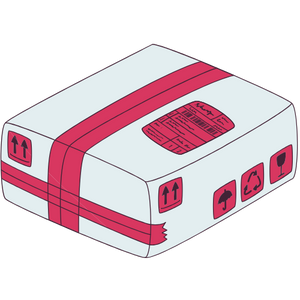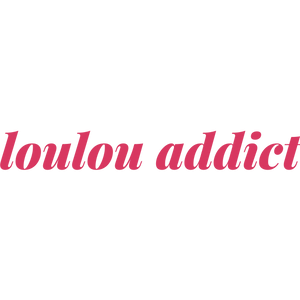Irritability, cravings, and low energy—the signs of the luteal phase

You’re at day 17, your ovulation has just passed. The luteal phase then begins, bringing with it a range of potential minor and more significant symptoms known as PMS, premenstrual syndromes. Just before your next period starts, you may experience physical or psychological states you don’t have during the rest of the month; PMS is inherent to the luteal phase.
Do you have strange cravings? Feeling more tired, worn out? No energy? Difficulty concentrating? Feeling down? Overwhelmed, discouraged, or more angry, irritable, or stressed? These are the premenstrual symptoms or PMS. We explain everything!
You’re at day 17, your ovulation has just passed. The luteal phase then begins, bringing with it a potential range of minor and more significant symptoms called PMS, premenstrual syndromes. Just before your next period starts, you may experience physical or psychological states you don’t have during the rest of the month; PMS is inherent to the luteal phase.
Are you experiencing strange cravings? Feeling more tired, more worn out? No energy? Difficulty concentrating? Feeling down? Overwhelmed, discouraged, or more angry, irritable, or stressed? These are the premenstrual symptoms or PMS. We explain everything!
In this article
The menstrual cycle, the basics
Remember, we’ve already covered the luteal phase together. We ran a series of four articles on the menstrual cycle, dedicating one article to each phase of the female cycle:
- The Menstrual Cycle. Periods,
- The Menstrual Cycle. The follicular phase,
- The Menstrual Cycle. Ovulation,
- The menstrual cycle. The luteal phase.
Let’s place the luteal phase again within the menstrual cycle. The menstrual cycle is a cyclical process in a woman’s body that repeats over and over again.
This female cycle is hormonal; it is governed, triggered, and sometimes disrupted by hormones.
Finally, this menstrual cycle is essential for reproduction. It begins when a girl goes through puberty, at her first period, and ends at menopause.
The menstrual cycle: the essentials
- During the follicular phase, the uterus prepares everything to welcome the potential fertilized egg. Its lining thickens so the fertilized egg can implant properly. The endometrium then resembles a cozy bed. In the ovaries, follicles grow to reach maturity.
- About 15 days later, ovulation occurs. A follicle reaches maturity and detaches from the ovary; its goal? To find a sperm cell for fertilization. This is the most fertile time in your cycle and when your chances of getting pregnant are highest. The egg travels down the fallopian tube.
- If you’re on contraception, a virgin, or haven’t had sexual intercourse, the egg won’t find a viable sperm. No embryo will form. During the luteal phase, your whole body checks whether fertilization has occurred. Hormones are at their peak: progesterone (produced by the ruptured follicle, the corpus luteum) and estrogen. If no implantation occurs, if no embryo nests in the endometrium, the egg disintegrates, hormone levels (estrogen and progesterone) drop sharply, and a new period begins.
- The cycle comes full circle—your period is here again. This menstruation sheds the uterine lining built up during the previous cycle. To make your period as stress-free as possible, try Louloucup period underwear, the Loulou menstrual cup, or our period swimwear. Don’t get caught off guard—your menstrual cycle can be tracked, your period can be anticipated, and we’ll help you calculate your cycle to avoid any surprises.
Everything you need to know about the luteal phase
The luteal phase lasts about two weeks on average and, if you’ve been following, falls between ovulation and your next period. This is the time in your cycle when you’ll be especially sensitive because your hormones are very high and then drop sharply.
If you suffer from stomach cramps of varying intensity during your period, the luteal phase can bring sneakier, more surprising symptoms. They are very varied. You’ll experience physical and psychological states you don’t usually have at other times.
Menstrual cycle, luteal phase, and PMS
🌸 Cravings, irritability, fatigue—various symptoms of the luteal phase
Really strange food cravings (especially for sweets), negative moods, a noticeable lack of energy—the luteal phase isn’t very pleasant to go through.
Many women experience PMS in their lives. Over 150 symptoms have been identified to date. They can be physical or psychological, vary greatly in intensity, and don’t always occur every month.
🌸 Physical symptoms
Major symptoms can include bloating, digestive changes, water retention, breast pain, headaches, or even acne.
Some women also experience eating disorders (cravings or unexplained hunger), varying fatigue, or even dizziness. Hypersensitivity (to light, noise), hot flashes, and abdominal cramps complete this long list.
🌸 Psychological symptoms
Stress, irritability, anger, aggression, and impatience can be amplified in some women during the luteal phase. Likewise, lethargy, apathy, low spirits, lack of enthusiasm and motivation, as well as negativity, sadness, and depressive feelings may appear, even though just a few days earlier your mood was great!
Confusion and feelings of worthlessness, inadequacy, or being overwhelmed. Lack of concentration, confusion, a highly variable libido, and even insomnia are also premenstrual symptoms.
🌸 Why do I feel like eating?
It’s simply the rise in progesterone at the start of the luteal phase that makes you crave more sugar, among other things. Hence your irresistible urges for chocolate, cookies, cakes, and other treats that aren’t exactly light or healthy. Progesterone is a hormone produced by the corpus luteum. The corpus luteum is the follicle that ruptured in the uterus after ovulation.
🌸 Why am I getting irritated?
During the second half of the luteal phase, hormone levels drop. This leads to more unstable feelings and moods. You become more sensitive, angrier, more stressed, and hypersensitive.
🌸 Why am I feeling sluggish, low on energy, and tired?
The gradual decline in estrogen levels (the other main ovarian hormone alongside progesterone) during the second half of the cycle explains your fatigue and lack of energy, which can be truly debilitating in daily life.
A few tips for getting through your luteal phase more comfortably
Through diet, lifestyle, exercise, rest, as well as natural or more targeted treatments, solutions exist to cope with PMS. Don’t endure this stress, anger, or irritability alone anymore.
Here are a few ideas:
- Avoid salt, processed sugar, alcohol, and stimulating drinks, and favor vegetables, water, and dairy products. Cook at home and avoid processed foods.
- Let off steam with a sport you enjoy. The goal is to move, activate your body and muscles, and release endorphins. This isn’t about performance but simply about feeling good.
- Listen to yourself. Listen to your body and your own limits and accept them. Take time to breathe, meditate, relax, and reconnect with yourself. Do sophrology sessions to relieve stress. Learn to know yourself and put things into perspective. Take a bath, do a craft activity to focus on something positive.
- Set up, with the help of healthcare professionals, vitamin courses, supplements, or others that can target specific symptoms.
Like this article? Pin it! 😜































